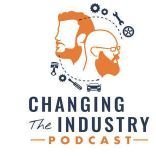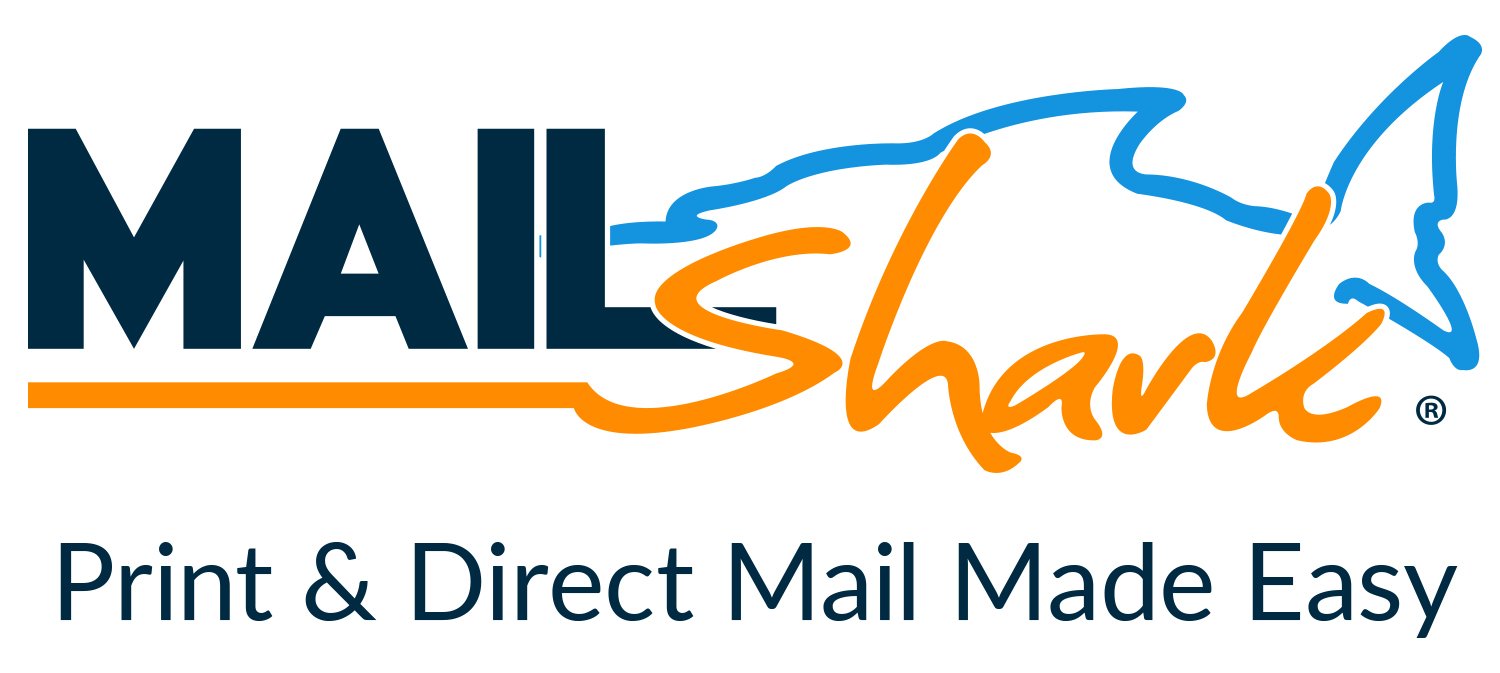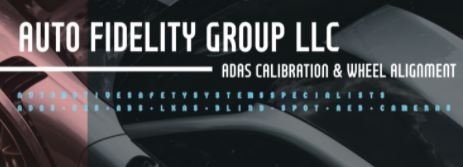Startup Feasibility
-
Available Subscriptions
-
Have you checked out Joe's Latest Blog?
-
By Joe Marconi in Joe's Blog0 commentsIt always amazes me when I hear about a technician who quits one repair shop to go work at another shop for less money. I know you have heard of this too, and you’ve probably asked yourself, “Can this be true? And Why?” The answer rests within the culture of the company. More specifically, the boss, manager, or a toxic work environment literally pushed the technician out the door.
While money and benefits tend to attract people to a company, it won’t keep them there. When a technician begins to look over the fence for greener grass, that is usually a sign that something is wrong within the workplace. It also means that his or her heart is probably already gone. If the issue is not resolved, no amount of money will keep that technician for the long term. The heart is always the first to leave. The last thing that leaves is the technician’s toolbox.
Shop owners: Focus more on employee retention than acquisition. This is not to say that you should not be constantly recruiting. You should. What it does means is that once you hire someone, your job isn’t over, that’s when it begins. Get to know your technicians. Build strong relationships. Have frequent one-on-ones. Engage in meaningful conversation. Find what truly motivates your technicians. You may be surprised that while money is a motivator, it’s usually not the prime motivator.
One last thing; the cost of technician turnover can be financially devastating. It also affects shop morale. Do all you can to create a workplace where technicians feel they are respected, recognized, and know that their work contributes to the overall success of the company. This will lead to improved morale and team spirit. Remember, when you see a technician’s toolbox rolling out of the bay on its way to another shop, the heart was most likely gone long before that.
-
-
Similar Topics
-
By carmcapriotto
The Weekly Blitz is brought to you by our friends over at Shop Marketing Pros. If you want to take your shop to the next level, you need great marketing. Shop Marketing Pros does top-tier marketing for top-tier shops.
Click here to learn more about Top Tier Marketing by Shop Marketing Pros and schedule a demo:https://shopmarketingpros.com/chris/
Check out their podcast here: https://autorepairmarketing.captivate.fm/
If you would like to join their private Facebook group go here: https://www.facebook.com/groups/autorepairmarketingmastermind
In this podcast episode, Coach Chris Cotton from Auto Fix Auto Shop Coaching emphasizes the importance of seeking inspiration and innovation outside the auto repair industry. He challenges shop owners to break out of their comfort zones and learn from disruptors in fields like hospitality, retail, healthcare, and fitness. Chris discusses how adopting customer-centric approaches and technologies from these industries can transform auto repair businesses.
For instance, he highlights how the hospitality industry's focus on exceptional customer service and personalized experiences can be mirrored in auto repair shops to build stronger customer relationships and loyalty. Similarly, he points out how retail's use of data analytics and customer feedback can help auto shops better understand their clients' needs and preferences, leading to more tailored services and improved satisfaction.
Chris also explores how the healthcare sector's emphasis on transparency and trust can be applied to auto repair, fostering a more open and honest communication channel between mechanics and customers. Additionally, he draws parallels with the fitness industry's use of subscription models and community-building strategies, suggesting that auto repair shops could benefit from implementing similar membership programs to ensure steady revenue and customer engagement.
He encourages proactive learning, attending conferences, and networking with professionals from other sectors. By stepping outside the traditional boundaries of the auto repair industry, shop owners can gain fresh perspectives and innovative ideas that can set them apart from competitors.
The episode concludes with practical steps for implementing these innovative ideas to enhance customer experience and drive positive change in auto repair shops. Chris provides actionable advice on how to start small, such as introducing a customer feedback system or experimenting with new service packages, and gradually scale up these initiatives. He also stresses the importance of continuous improvement and staying adaptable to evolving customer expectations and industry trends. By embracing these strategies, auto repair shops can not only improve their operations but also create a more engaging and satisfying experience for their customers.
The power of looking outside our industry (00:01:05)
Exploring the importance of learning from disruptors in other fields to stay ahead of the curve.
Innovation at the edges (00:03:26)
Discussing how innovation often occurs at the edges of industries and the benefits of looking beyond traditional practices.
Examples of disruptors in other industries (00:04:37)
Exploring examples from healthcare, food and beverage, connected fitness apps, and education to draw insights for auto repair business.
Implementing ideas in auto repair shops (00:09:41)
Strategies for implementing ideas from other industries, such as networking, adopting technology, experimenting with service models, focusing on customer experience, and empowering the team.
Connect with Chris:
[email protected]
Phone: 940.400.1008
www.autoshopcoaching.com
Facebook: https://www.facebook.com/
AutoFixAutoShopCoachingYoutube: https://bit.ly/3ClX0ae
#autofixautoshopcoaching #autofixbeautofixing #autoshopprofits #autoshopprofit #autoshopprofitsfirst #autoshopleadership #autoshopmanagement #autorepairshopcoaching #autorepairshopconsulting #autorepairshoptraining #autorepairshop #autorepair #serviceadvisor #serviceadvisorefficiency #autorepairshopmarketing #theweeklyblitz #autofix #shopmarketingpros #autofixautoshopcoachingbook
Click to go to the Podcast on Remarkable Results Radio
-
By carmcapriotto
Thanks to our Partner, NAPA Auto Care Alex Saladna from WickedFile discusses the challenges shop owners face in tracking parts, expenses, and managing profit margins. With real-life examples of shop owners discovering hidden costs and inefficiencies, this episode is a must-listen for anyone looking to optimize their business operations. Alex Saladna, WickedFile Show Notes
The Brakes for Breasts Initiative (00:00:15) An initiative by two shop owners to raise funds for a vaccine for triple negative breast cancer. https://brakesforbreasts.com Challenges in Business Management (00:02:06) The challenges in tracking parts, expenses, and managing profit margins in the automotive industry. Founding of WickedFile (00:02:38) How WickedFile was founded and the motivation behind creating a parts tracking solution for the auto repair industry. Importance of Tracking Spending and Financial Documents (00:06:05) Discussion about the significance of tracking spending and managing financial documents in the automotive industry, including the risks of financial discrepancies. Identifying Business Gaps (00:07:14) Alex highlights the importance of identifying gaps in business operations and the potential financial impact. Efficient Parts Tracking and Profit Management (00:09:25) Discussion about the significance of efficient parts tracking and managing profit margins in the automotive industry. Tracking Vendor Credits (00:10:35) Discussion about the processes and disciplines for tracking vendor credits and ensuring the accuracy of financial transactions. Simplified Document Management (00:12:04) Explanation of the simplified document management process offered by WickedFile, including email invoicing and categorization. Efficiency in Document Retrieval (00:13:31) The efficiency of document retrieval in WickedFile's system and the benefits of streamlined data organization. Expense Management (00:15:40) Discussion about the upcoming features of WickedFile for expense management, including insights into business spending patterns. WickedFile's Integration with Management Systems (00:20:19) Explanation of the integration process and the management systems currently supported by WickedFile. Inventory Management and Disciplines (00:21:47) The importance of inventory management, including tracking parts and maintaining discipline in the system. WickedFile's Role in Enhancing Business (00:25:01) How WickedFile aims to enhance business operations, improve profitability, and address parts-related challenges. Training and Support for WickedFile Users (00:26:16) Details about the training, support, and enablement provided by WickedFile for its users. Impact of WickedFile on Business Operations (00:26:57) Real-life examples of how WickedFile helped businesses identify issues such as excessive spending and theft.
Thanks to our Partner, NAPA Auto Care Learn more about NAPA Auto Care and the benefits of being part of the NAPA family by visiting https://www.napaonline.com/en/auto-care Connect with the Podcast: -Follow on Facebook: https://www.facebook.com/RemarkableResultsRadioPodcast/ -Join Our Virtual Toastmasters Club: https://remarkableresults.biz/toastmasters -Join Our Private Facebook Community: https://www.facebook.com/groups/1734687266778976 -Subscribe on YouTube: https://www.youtube.com/carmcapriotto -Follow on LinkedIn: https://www.linkedin.com/in/carmcapriotto/ -Follow on Instagram: https://www.instagram.com/remarkableresultsradiopodcast/ -Follow on Twitter: https://twitter.com/RResultsBiz -Visit the Website: https://remarkableresults.biz/ -Join our Insider List: https://remarkableresults.biz/insider -All books mentioned on our podcasts: https://remarkableresults.biz/books -Our Classroom page for personal or team learning: https://remarkableresults.biz/classroom -Buy Me a Coffee: https://www.buymeacoffee.com/carm -The Aftermarket Radio Network: https://aftermarketradionetwork.com -Special episode collections: https://remarkableresults.biz/collections
Click to go to the Podcast on Remarkable Results Radio
-
By carmcapriotto
Thanks to our Partner, Shop Boss Tom Petty discusses the critical importance of technical training in the automotive industry. By addressing the skills gap, developing young talent, investing in continuous training, and embracing technological advancements, the industry can ensure a skilled and competent workforce ready to tackle the challenges of modern automotive technology. Tom Petty, Petty Motorworks, Waretown, NJ. Tom's previous episodes HERE Show Notes
The importance of technical training (00:00:06) Tom Petty emphasizes the need for shop owners to be engaged in creating a culture of technical training. The changing automotive industry (00:00:27) The automotive industry is rapidly evolving, and in-house training and mentorship are crucial for staying competitive. Cultivating young talent (00:02:18) Establishing apprentice programs and developing young individuals with the right skills and attitude for the automotive industry. Building a supportive network (00:05:12) The importance of collaboration and support among local automotive shops to develop and nurture young talent. Identifying and nurturing talent (00:07:21) Recognizing individuals with basic skill sets and natural aptitude and cultivating them into valuable technicians. Challenges in the industry (00:08:51) The industry's failure to focus on education and talent development leading to frustration and departure of potential talent. Thanks to our Partner, Shop Boss Shop Boss – Shop Management Software built by shop owners, for shop owners. It works the way you need it to, right out of the box. Find on the web at https://shopboss.net Connect with the Podcast: -Follow on Facebook: https://www.facebook.com/RemarkableResultsRadioPodcast/ -Join Our Virtual Toastmasters Club: https://remarkableresults.biz/toastmasters -Join Our Private Facebook Community: https://www.facebook.com/groups/1734687266778976 -Subscribe on YouTube: https://www.youtube.com/carmcapriotto -Follow on LinkedIn: https://www.linkedin.com/in/carmcapriotto/ -Follow on Instagram: https://www.instagram.com/remarkableresultsradiopodcast/ -Follow on Twitter: https://twitter.com/RResultsBiz -Visit the Website: https://remarkableresults.biz/ -Join our Insider List: https://remarkableresults.biz/insider -All books mentioned on our podcasts: https://remarkableresults.biz/books -Our Classroom page for personal or team learning: https://remarkableresults.biz/classroom -Buy Me a Coffee: https://www.buymeacoffee.com/carm -The Aftermarket Radio Network: https://aftermarketradionetwork.com -Special episode collections: https://remarkableresults.biz/collections
Click to go to the Podcast on Remarkable Results Radio
-
By Changing The Industry
Episode 170 - The Future of Auto Parts Using Wiretronic's AI-Powered Solutions

-
By carmcapriotto
The Weekly Blitz is brought to you by our friends over at Shop Marketing Pros. If you want to take your shop to the next level, you need great marketing. Shop Marketing Pros does top-tier marketing for top-tier shops.
Click here to learn more about Top Tier Marketing by Shop Marketing Pros and schedule a demo:https://shopmarketingpros.com/chris/
Check out their podcast here: https://autorepairmarketing.captivate.fm/
If you would like to join their private Facebook group go here: https://www.facebook.com/groups/autorepairmarketingmastermind
In this podcast episode, Coach Chris Cotton from Auto Fix Auto Shop Coaching delves into the multifaceted benefits of adopting a four-day workweek within the auto repair industry. He underscores significant enhancements in employee morale, work-life balance, and overall productivity, while also noting the potential to attract and retain top-tier talent. Chris provides an in-depth analysis of various structural approaches for implementing a four-day workweek, including staggered shifts and rotating schedules, ensuring that operations run smoothly without compromising service quality.
The episode, sponsored by Shop Marketing Pros, is a treasure trove of practical tips for auto repair shop owners contemplating this transition. Chris emphasizes the importance of developing a customized plan that meticulously balances employee satisfaction with operational efficiency. He discusses the nuances of different implementation strategies, such as ensuring adequate coverage during peak hours and maintaining customer service standards. Additionally, Chris shares real-world examples and success stories from shops that have successfully made the switch, providing listeners with a comprehensive understanding of the potential challenges and rewards.
Listeners will also gain insights into the financial implications of a four-day workweek, including potential cost savings from reduced overhead and increased employee retention. Chris highlights the importance of clear communication with staff throughout the transition process and offers advice on how to gather and incorporate employee feedback to fine-tune the new schedule. By the end of the episode, auto repair shop owners will be equipped with the knowledge and tools needed to make an informed decision about whether a four-day workweek is the right fit for their business.
Boosted Employee Morale and Productivity (00:02:19) Shorter workweek leads to increased productivity and higher job satisfaction, improving employee morale and focus. Improved Work-Life Balance (00:03:28) A four-day workweek allows for more family time, hobbies, and rest, reducing burnout and maintaining mental and physical health. Attracting Top Talent (00:04:23) Offering a four-day workweek can attract top talent valuing flexibility and work-life balance, setting the employer apart. Operational Efficiency and Financial Benefits (00:05:32) Streamlining operations, reducing turnover rates, and potential cost savings with a condensed workweek. Structural Approaches to Transitioning to a Four-Day Workweek (00:06:34) Staggered shifts, extended hours, rotating schedules, and seasonal adjustments to implement a four-day workweek.
Connect with Chris:
[email protected]
Phone: 940.400.1008
www.autoshopcoaching.com
Facebook: https://www.facebook.com/
AutoFixAutoShopCoachingYoutube: https://bit.ly/3ClX0ae
#autofixautoshopcoaching #autofixbeautofixing #autoshopprofits #autoshopprofit #autoshopprofitsfirst #autoshopleadership #autoshopmanagement #autorepairshopcoaching #autorepairshopconsulting #autorepairshoptraining #autorepairshop #autorepair #serviceadvisor #serviceadvisorefficiency #autorepairshopmarketing #theweeklyblitz #autofix #shopmarketingpros #autofixautoshopcoachingbook
Click to go to the Podcast on Remarkable Results Radio
-
-
-
Our Sponsors














Recommended Posts
Create an account or sign in to comment
You need to be a member in order to leave a comment
Create an account
Sign up for a new account in our community. It's easy!
Register a new accountSign in
Already have an account? Sign in here.
Sign In Now